
Gunnera manicata, Brazilian GiantRhubarb, Dinosaur Food bulb/seedling Garden Seeds Market
giant rhubarb A very robust herbaceous perennial, forming a spreading clump of lobed, rounded, rough-textured leaves with spiny stems 1-2m in width. Tiny red-brown flowers are borne in erect panicles to 1m in height Other common names Chilean rhubarb prickly rhubarb Join the RHS today and save 25% Join now < > © RHS 1987 © @RHS © RHS 1987 © @RHS

Gunnera manicata Brazilian Rhubarb The Seed Vine
By David Rees January 9, 2024 2 Mins Read. Gunnera manicata, image copyright: GBNNSS. Retailers who sell pond plants are being advised to stop selling plants named as 'gunnera manicata' (Brazilian giant rhubarb) owing to the danger of them being a hybrid crossed with a banned species. A recent research paper published by the Royal.

Giant Rhubarb Seeds (Gunnera manicata) Price €1.95
The most popular of the species is the Gunnera manicata [mah-nuh-KAH-tuh]. Known as the giant rhubarb of Brazil or dinosaur food, the plant produces clumps of growth up to 8′ feet tall with leaves measuring over 4′ feet. Here's a closer look at the recommended plant care techniques for giant rhubarb and other Gunnera species.

PlantFiles Pictures Giant Rhubarb, Giant Gunnera, Dinosaur Food (Gunnera manicata) by KMAC
Gunnera manicata is a fast growing broadleaf evergreen perennial aquatic with green flowers in spring and summer. It can grow 10 FT - 15 FT - wide, 6 FT - 10 FT - tall. To grow well, it prefers sun and standing water - high water. Grows best in rich soil. #big leaves, #dramatic, #tropical looking, #prickly, #larger quantity available Plant family: #Gunneraceae USDA Zone: zone 7a - 9b
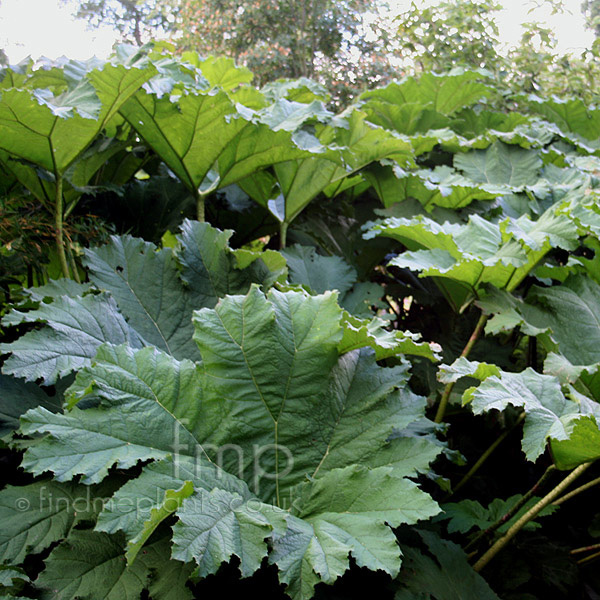
Gunnera manicata (Gunnera, Giant Rhubarb) Information, Pictures & Cultivation Tips
Fri 8 Dec 2023 05.46 EST With its dramatic leaves and sprawling structure, the giant rhubarb has long been a popular garden plant, gracing the grounds of stately homes and multiple National.

Dinosaur Food Gunnera Manicata aka Giant Rhubarb r/gardening
Gunnera manicata is one of the biggest and most spectacular architectural, herbaceous plants, commonly known as 'giant rhubarb'. It needs a lot of space and looks best grown as a specimen plant in a bog garden or at the pond edge, where the reflections from the water reveal the prickly undersides of its leaves.
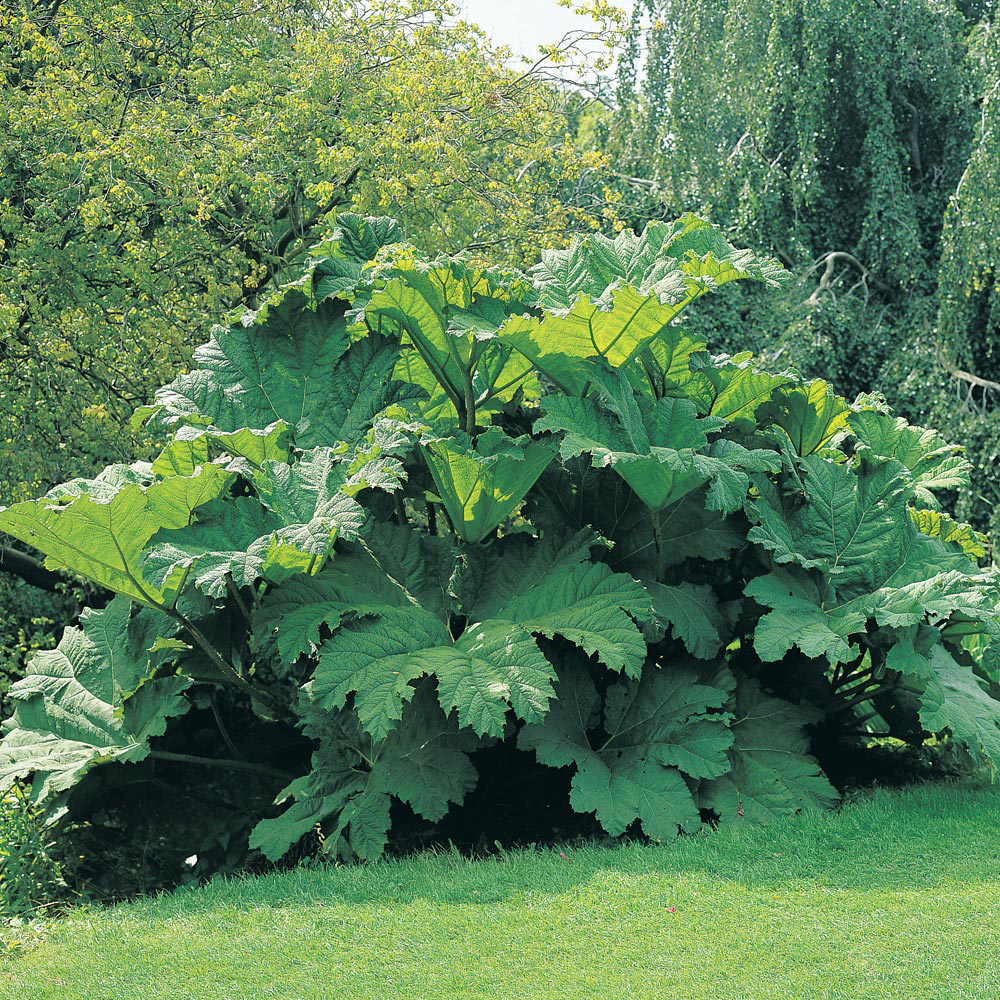
Gunnera manicata, Giant Rhubarb in GardenTags plant encyclopedia
10 plants to grow in bog gardens Growing gunnera: jump links Where to grow gunnera How to care for gunnera How to propagate gunnera Gunnera problem-solving Gunnera buying advice Types of gunnera to grow Where to plant gunnera How to grow gunnera - Gunnera manicata growing in partial shade

Giant Rhubarb Seeds (Gunnera manicata) Ár €1.95
Find Giant Rhubarb (Gunnera manicata) in Issaquah Seattle Bellevue Redmond Renton Sammamish Washington WA at Squak Mountain Nursery (Brazilian Gunnera) 425.392.1025; Directions;. Giant Rhubarb's attractive enormous serrated lobed palmate leaves remain green in color throughout the year on a plant with an upright spreading habit of growth.
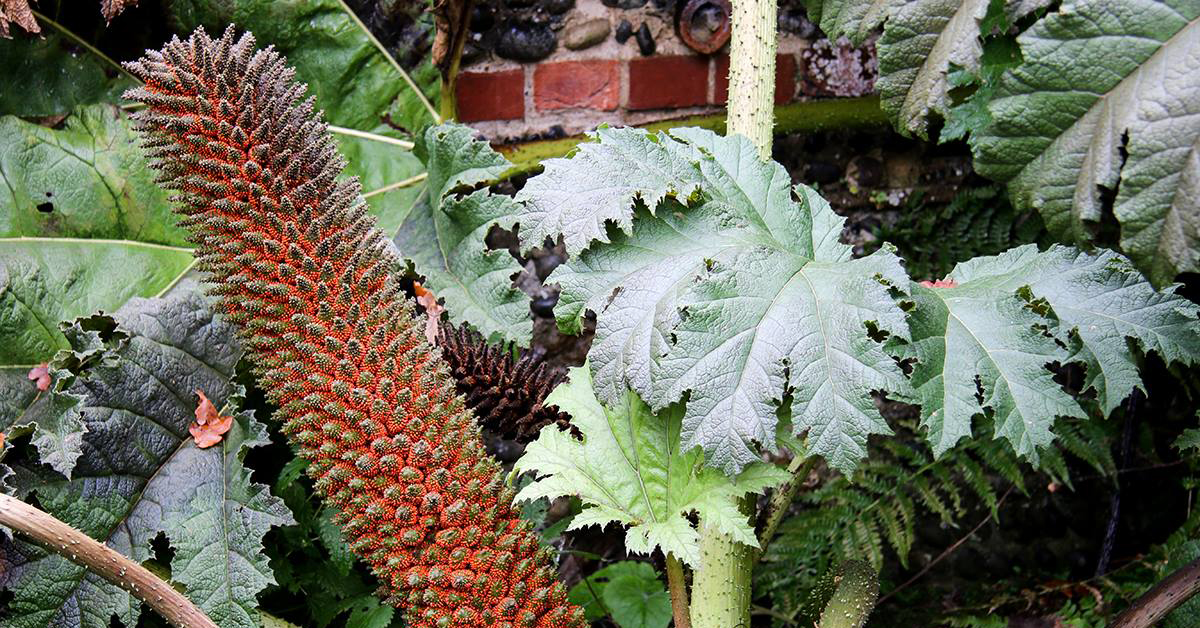
Giant Rhubarb (Gunnera Manicata)
A very architectural plant, Gunnera manicata (Giant Rhubarb) is a large, herbaceous clump-forming perennial grown primarily for its gigantic, round to kidney-shaped, deep green leaves, up to 6 ft. across (180 cm). The leaves are palmately lobed, prominently veined, and sharply toothed and sit atop prickly stalks that extend to 10 ft. tall (3 m).
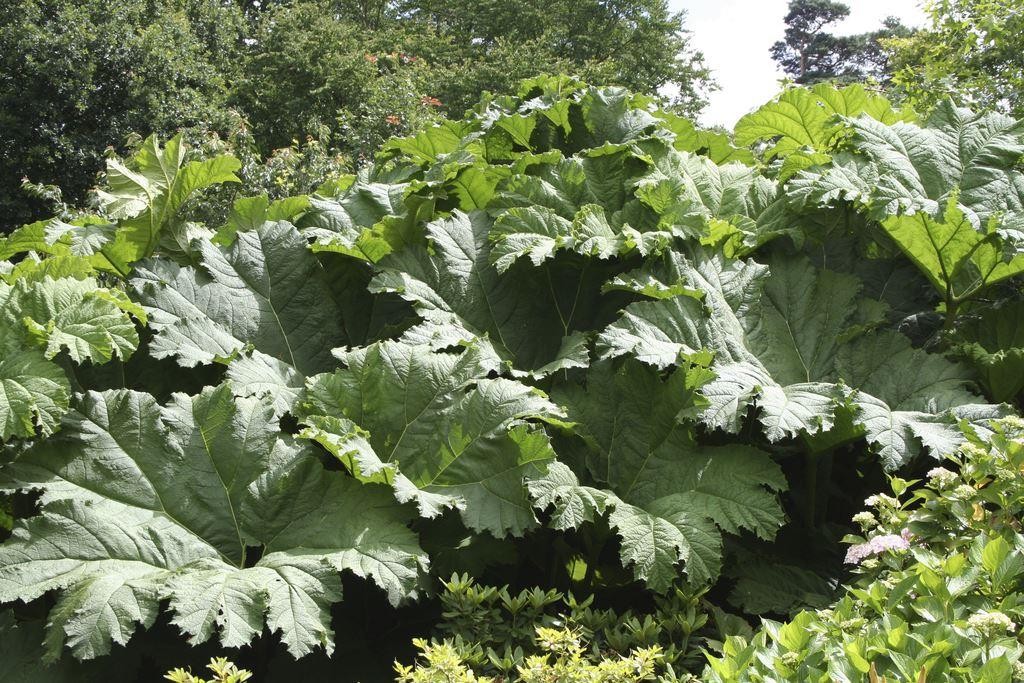
Gunnera Manicata Giant Chile Rhubarb Garden Plants
Features Massive foliage quickly unfurls in springtime to create an impressive display. The large leaves add a jungle-like feel to plantings. Long spikes of greenish-red flowers in summer are followed by cluster of tiny red-green fruit. Uses Appropriate near water and in damp woodland settings. Giant Rhubarb (Gunnera manicata) Care Guide
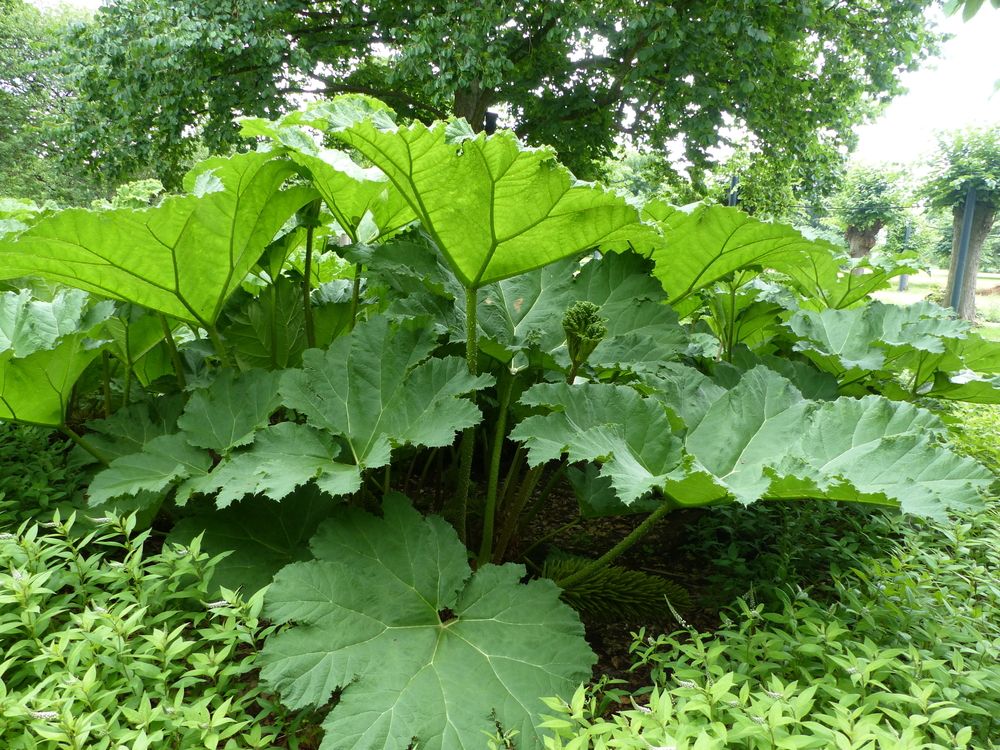
Gunnera manicata Giant Rhubarb Plant Photos & Information
The giant-rhubarb (Gunnera manicata) with its huge leaves is an absolute eye-catcher in the garden. Especially the oasis of calm at the garden pond is a great way to put the spotlight on it. The plant is easy to grow, so that you will soon enjoy this perennial herbaceous plant.
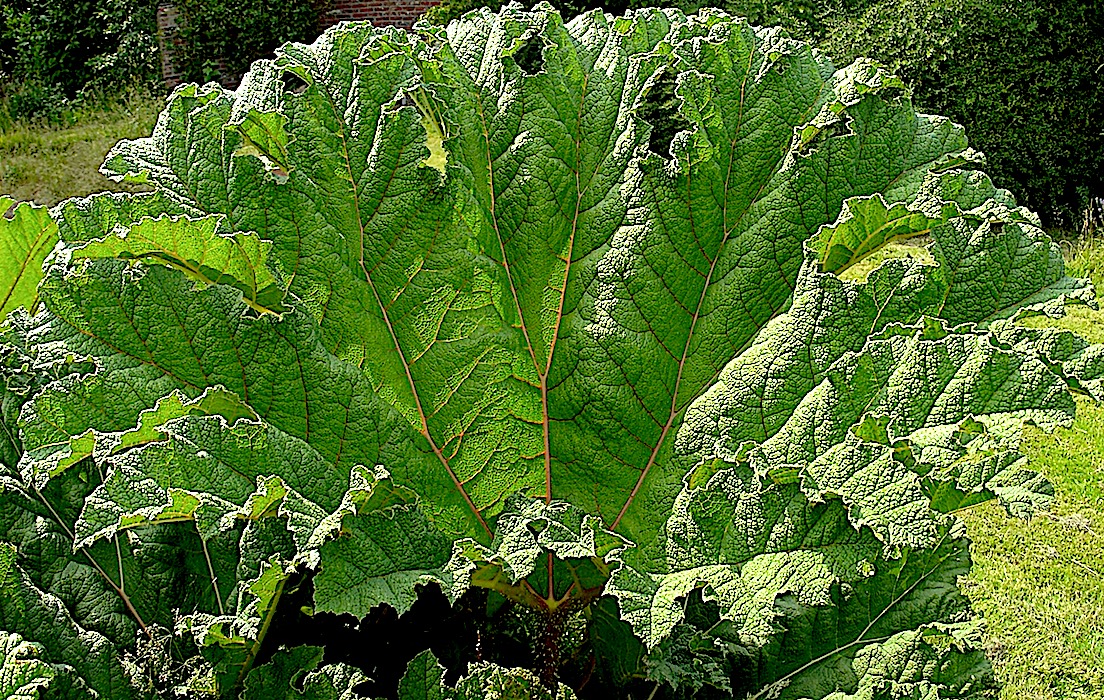
Gunnera Giant Rhubarb Plant What New Owners Need To Know Daylilies in Australia
Gunnera manicata, known as Brazilian giant-rhubarb, or giant rhubarb is a species of flowering plant in the Gunneraceae family from Brazil. It is a large, clump-forming herbaceous perennial growing to 2.5 m (8 ft) tall by 4 m (13 ft) or more. The leaves of G. manicata grow to an impressive size. Leaves with diameters well in excess of 120 cm (4.
Gunnera manicata Giant Rhubarb
Find out more about Gunnera manicata.From Birmingham's Favourite Garden.. Commonly known as the giant rhubarb - although not related and far less edible is this giant from South America. The South American Indians peel and eat the leaf stalks, but there are probably far better thing to eat and we would advise against it!.

Giant rhubarb (Gunnera manicata) Stock Image B812/1187 Science Photo Library
Family: Gunneraceae (Gunnera) Distribution: Zuid-Brazilië, Colombia. Hardiness: Zone 07. Life form: Perennial. Comments: Giant rhubarb lives up to its name: in summer the huge umbrella-shaped leaves can be seen from the other side of the canal. This species is native to southern Brazil and Colombia. In our climate the plant is hardy as long as.

Gunnera manicata Giant Rhubarb Young Plant in 9cm pot x 3 Pots on OnBuy
Gunnera, Giant Rhubarb. Origin: Colombia, Brazil. Foliage: This plant has giant leaves. Uses in landscape design: An imposing focus plant.Growing best on pond margins or stream banks. Maintenance: Must be divided in late winter. Soil conditions: It needs compost-rich, moist soil with a thick mulch. Propagation: Division:The plant must be.

100pcs Gunnera Manicata Bonsai Also Called Giant Rhubarb Bonsai Grow In Partial Shade Huge
Gunnera manicata - Brazilian Giant Rhubarb is fascinating to all who see it, even those not predisposed to having a love for all thngs green. Leaves can grow from four to six feet, are virtually peltate and supported on strong, thick stalks. A single leaf is rounded, often cupped with deep indentations that with the broad, rounded and extended leaf ends suggest lobes.